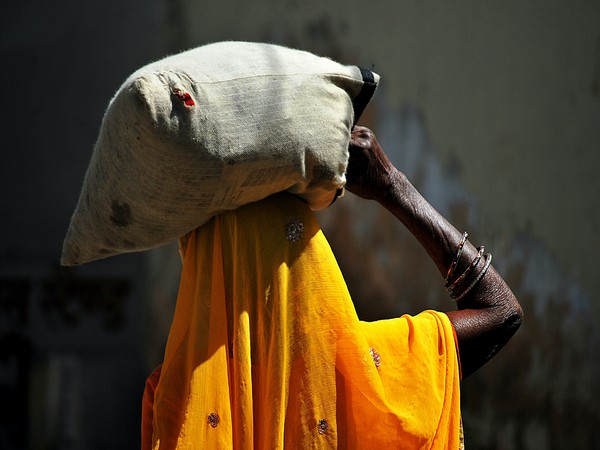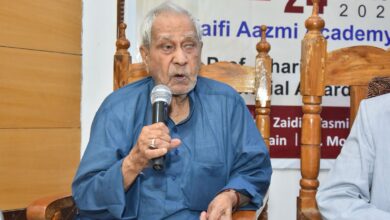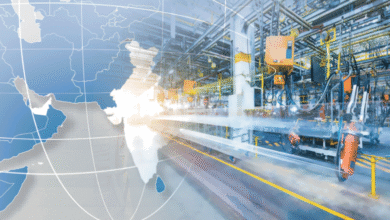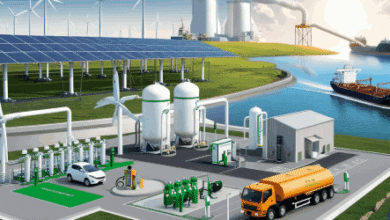India’s remarkable growth story with focus on inequality reduction

India’s resilient growth story is becoming visible with improved living standards and significant reduction in poverty. India will add 279 million people in the global middle class by 2030; India’s burgeoning middle class along with government policy focus on informal workers and women would reduce income inequalities in a significant way.
India’s growth story has become promising with a significant rise in income levels and improved living standards with the support of digitalisation and technological advancements. Given the global circumstances, the Indian economy has proven significantly resilient.
India is consistently growing at more than 7% in the post pandemic years. The size of the economy is expected to touch USD 4 trillion in 2024; according to the recent report from ‘S&P Global Market Intelligence’, India will surpass Japan and become the second-largest economy in the Asia-Pacific region, with a projected GDP of $7.3 trillion by 2030.
The implementation of reforms in India has garnered global recognition and remarkable results. According to the recent UNDP “Global Multidimensional Poverty Index/2023” around 415 million poor people in India transitioned out of poverty between 2005-06 and 2019-21with its pro-activeness towards the uplift of the downtrodden.
India has worked on various fronts like technology upgradation, digitalisation, employment creation, and many more. The country’s digital public infrastructure (DPI) has facilitated significant financial inclusion, provided the digital backbone for social transfers and access to social and other services, and has been transformative for the country.
It is underpinned by the India Stack (often referred to as the JAM trinity), the interlinked building blocks which are comprised of Jan Dhan free savings accounts; Aadhaar, the biometric identification system that provides for unique digital identities, and Mobile which has become the primary means of accessing financial services combined with the instant unified payments interface (UPI) and the more recent Open Network for Digital Commerce initiative aims to facilitate a single open network digital commerce solution for the level playing field for businesses.
New technologies have been integrated into agricultural production, including solar-assisted irrigation in off-grid rural areas and solar-powered multi-utility farming vehicles. Some farmers have adopted precision farming techniques, utilising data and artificial intelligence to optimise the use of inputs like water and fertilizers which in turn led to higher yields and reduced environmental impacts.
In 2005, the Government of India passed the Mahatma Gandhi National Rural Employment Act (MGNREGA), a comparable demand-driven national wage employment program, through parliamentary legislation. This initiative serves as a powerful tool for enhancing social protection and ensuring livelihood security. This indicates the efforts of the government towards inclusive growth.
India has been a forerunning in the use of digital systems and platforms to provide government services and respond rapidly during emergencies.
The Indian Government has effectively worked on women’s empowerment and equality, which can be witnessed by a bill passed in 2011 that reserves 50 percent of seats for women in Panchayati Raj Institutions and helped elect over one million women to government positions – globally the largest absolute number of women in grassroots politics.
Recently, the Parliament passed a constitutional amendment bill in September 2023 to reserve one-third of seats in both houses of Parliament and State Legislative Assemblies.
Although, poverty remains persistently concentrated in states that are home to 45 percent of the country’s population and contain 62 percent of its poor, India’s recent growth spurt successfully reduced the incidence of poverty in a significant way.
Over recent decades, India has improved living standards, and significantly reduced poverty. Between 2000 and2022, per capita income soared from $442 to $2,389. Between 2004 and 2019, poverty rates (based on the international poverty measure of $2.15 per day) in India plummeted from 40 to 10 percent.
Moreover, according to UNDP “2024 Regional Human Development Report, Making our Future: New Directions for Human Development in Asia and Pacific”, the share of the population living in multidimensional poverty fell from 25 to 15 percent between 2015-16 and2019-21.
India is taking millions of its people out of extreme poverty now, this will help to reduce global economic inequality. The biggest low-income nations have moved closer to becoming middle-income which will lead to reducing global income inequality.
The government offered enormous assistance during the pandemic that served people at the bottom.
Over the last decade, the country has made rapid strides in reducing income poverty, and done so faster than sub-Saharan Africa, where poverty is deeper and population growth faster.
According to “Regional Human Development Report, Making Our Future: New Directions for Human Development in Asia and the Pacific,2024,” over the next decade, Asia and the Pacific is expected to account for nearly 80 percent of the growth in the global middle-class – encompassing those living on between $12 and $120 a day.
India and China are dominating this growth, contributing, respectively, 35 and 24 percent to global middle-class growth or 279 and 192 million people that will enter the middle class expectedly by 2030.
In a nutshell, India’s focused approach to reduce the inequalities would go a long way to put steady strides to become a developed economy by 2047.
The focus on informal workers, migrant workers, and women is helping to reduce poverty and income inequalities. The States where there is a high concentration of poverty are being supported with desired policy support such as Direct Benefit Transfer, enhanced funding under the Mahatma Gandhi National Rural Employment Guarantee Act, and a more conducive environment for private investments for creating employment avenues for unskilled and semi-skilled workforce.
The government is working to decrease income inequality persistently. Targeted investments in social programs such as social security, healthcare, and other public services are being undertaken to alleviate income disparity, such as investment in public utilities such as electricity, water, and daycare. By implementing a people-first policy and smart growth methods that place a high value on natural assets, India is paving the path for a future that is more secure, peaceful, sustainable and prosperous.
Source: Times of Oman















